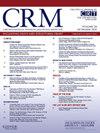支架上新型疏水涂层 Al/Al2O3 纳米线表面的体内生物相容性。
IF 1.6
Q3 CARDIAC & CARDIOVASCULAR SYSTEMS
引用次数: 0
摘要
背景:内膜增生和支架内再狭窄是小血管阻塞介入治疗中的一个难题。研究表明,Al/Al2O3 纳米线可在体外加速血管内皮细胞的增殖和迁移,同时抑制血管平滑肌细胞的生长。此外,用聚[双(2,2,2-三氟甲氧基)磷苯(PTFEP)涂层]对 Al/Al2O3 纳米线进行表面修饰还能进一步发挥其优势,如降低血小板粘附性。因此,本研究的目标是利用光学相干断层扫描(OCT)、定量血管造影术和组织形态学评估,比较新型 Al/Al2O3 + PTFEP 涂层纳米线裸金属支架与未涂层对照支架在体内的生物相容性。90 天后,对支架内狭窄、血栓形成和炎症反应进行评估。扫描电子显微镜用于分析支架表面:OCT分析显示,与对照支架相比,Al/Al2O3 + PTFEP涂层支架的新内膜增生明显减少。Al/Al2O3 + PTFEP涂层支架的新生内膜面积为1.16 ± 0.77 mm2,而对照支架为1.98 ± 1.04 mm2(p = 0.004);新生内膜厚度为0.28 ± 0.20,而对照支架为0.47 ± 0.10(p = 0.003)。定量血管造影显示,涂层支架的新生内膜生长较少。组织形态学显示两组间无明显差异,并显示支架支柱周围有明显的炎症反应:在长期随访中,置入外周动脉的铝/Al2O3 + PTFEP涂层支架表现出良好的耐受性,没有治疗相关的血管阻塞,OCT显示支架内再狭窄减少。这些初步的体内研究结果表明,Al/Al2O3 + PTFEP涂层纳米线支架可能具有用于预防支架内再狭窄的转化潜力。本文章由计算机程序翻译,如有差异,请以英文原文为准。
In vivo biocompatibility of a new hydrophobic coated Al/Al2O3 nanowire surface on stents
Background
Intima proliferation and in-stent restenosis is a challenging situation in interventional treatment of small vessel obstruction. Al/Al2O3 nanowires have been shown to accelerate vascular endothelial cell proliferation and migration in vitro, while suppressing vascular smooth muscle cell growth. Moreover, surface modification of Al/Al2O3 nanowires with poly[bis(2,2,2-trifluoromethoxy)phosphazene (PTFEP) coating enables further advantages such as reduced platelet adhesion. Therefore, the study's goal was to compare the biocompatibility of novel Al/Al2O3 + PTFEP coated nanowire bare-metal stents to uncoated control stents in vivo using optical coherence tomography (OCT), quantitative angiography and histomorphometric assessment.
Methods
15 Al/Al2O3 + PTFEP coated and 19 control stents were implanted in the cervical arteries of 9 Aachen minipigs. After 90 days, in-stent stenosis, thrombogenicity, and inflammatory response were assessed. Scanning electron microscopy was used to analyse the stent surface.
Results
OCT analysis revealed that neointimal proliferation in Al/Al2O3 + PTFEP coated stents was significantly reduced compared to control stents. The neointimal area was 1.16 ± 0.77 mm2 in Al/Al2O3 + PTFEP coated stents vs. 1.98 ± 1.04 mm2 in control stents (p = 0.004), and the neointimal thickness was 0.28 ± 0.20 vs. 0.47 ± 0.10 (p = 0.003). Quantitative angiography showed a tendency to less neointimal growth in coated stents. Histomorphometry showed no significant difference between the two groups and revealed an apparent inflammatory reaction surrounding the stent struts.
Conclusions
At long-term follow-up, Al/Al2O3 + PTFEP coated stents placed in peripheral arteries demonstrated good tolerance with no treatment-associated vascular obstruction and reduced in-stent restenosis in OCT. These preliminary in vivo findings indicate that Al/Al2O3 + PTFEP coated nanowire stents may have translational potential to be used for the prevention of in-stent restenosis.
求助全文
通过发布文献求助,成功后即可免费获取论文全文。
去求助
来源期刊

Cardiovascular Revascularization Medicine
CARDIAC & CARDIOVASCULAR SYSTEMS-
CiteScore
3.30
自引率
5.90%
发文量
687
审稿时长
36 days
期刊介绍:
Cardiovascular Revascularization Medicine (CRM) is an international and multidisciplinary journal that publishes original laboratory and clinical investigations related to revascularization therapies in cardiovascular medicine. Cardiovascular Revascularization Medicine publishes articles related to preclinical work and molecular interventions, including angiogenesis, cell therapy, pharmacological interventions, restenosis management, and prevention, including experiments conducted in human subjects, in laboratory animals, and in vitro. Specific areas of interest include percutaneous angioplasty in coronary and peripheral arteries, intervention in structural heart disease, cardiovascular surgery, etc.
 求助内容:
求助内容: 应助结果提醒方式:
应助结果提醒方式:


